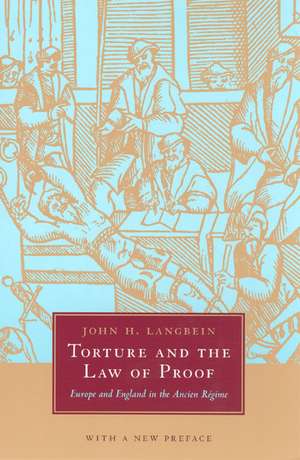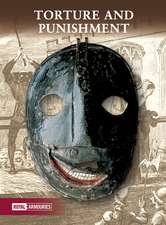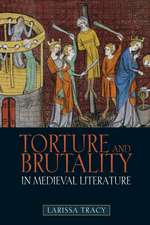Torture and the Law of Proof: Europe and England in the Ancien Régime
Autor John H. Langbeinen Limba Engleză Paperback – 15 aug 2006
In Torture and the Law of Proof John H. Langbein explores the world of the thumbscrew and the rack, engines of torture authorized for investigating crime in European legal systems from medieval times until well into the eighteenth century. Drawing on juristic literature and legal records, Langbein's book, first published in 1977, remains the definitive account of how European legal systems became dependent on the use of torture in their routine criminal procedures, and how they eventually worked themselves free of it.
The book has recently taken on an eerie relevance as a consequence of controversial American and British interrogation practices in the Iraq and Afghanistan wars. In a new introduction, Langbein contrasts the "new" law of torture with the older European law and offers some pointed lessons about the difficulty of reconciling coercion with accurate investigation. Embellished with fascinating illustrations of torture devices taken from an eighteenth-century criminal code, this crisply written account will engage all those interested in torture's remarkable grip on European legal history.
The book has recently taken on an eerie relevance as a consequence of controversial American and British interrogation practices in the Iraq and Afghanistan wars. In a new introduction, Langbein contrasts the "new" law of torture with the older European law and offers some pointed lessons about the difficulty of reconciling coercion with accurate investigation. Embellished with fascinating illustrations of torture devices taken from an eighteenth-century criminal code, this crisply written account will engage all those interested in torture's remarkable grip on European legal history.
Preț: 244.03 lei
Nou
Puncte Express: 366
Preț estimativ în valută:
46.72€ • 48.05$ • 38.76£
46.72€ • 48.05$ • 38.76£
Carte tipărită la comandă
Livrare economică 19 februarie-05 martie
Preluare comenzi: 021 569.72.76
Specificații
ISBN-13: 9780226468945
ISBN-10: 0226468941
Pagini: 240
Ilustrații: 8 line drawings
Dimensiuni: 140 x 216 x 18 mm
Greutate: 0.29 kg
Editura: University of Chicago Press
Colecția University of Chicago Press
ISBN-10: 0226468941
Pagini: 240
Ilustrații: 8 line drawings
Dimensiuni: 140 x 216 x 18 mm
Greutate: 0.29 kg
Editura: University of Chicago Press
Colecția University of Chicago Press
Notă biografică
John H. Langbein is the Sterling Professor of Law and Legal History at Yale University. He is the editor or author of several books, including, most recently, The Origins of Adversary Criminal Trial.
Recenzii
“Like all good monographs, Torture and the Law of Proof not only does what it sets out to do well but points to new directions. It is a concise scholarly work that compares two legal systems with graceful ease and has provocative implications extending far beyond the sleazy world of rack, strappado, and thumb screw.”











